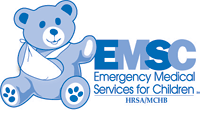
In this work, we will study pediatric champions, or pediatric emergency care coordinators (PECCs) in EMS agencies.The aims for the project are:
1) Determining whether having a PECC improves the quality of clinical care and the outcomes for children cared for by an EMS agency.
2) Establishing the best ways to launch a pediatric champion program in an EMS agency.
3) Understanding how PECCs can best do their work, and ways to evaluate and support PECCs.
Aims: What our project will do for children and EMS
AIM 1. Measure the impact a highly functional PECC on the Quality of EMS Clinical Care and Patient Outcomes
With our partner EMS agencies in CO, CT and RI, we will accomplish this aim. Patient, family, and provider outcomes will be assessed.
Aim 1, Objective 1:
Improved Quality of Clinical Care and Patient Outcomes for Pediatric EMS Patients. Quality of EMS care during pediatric EMS encounters will be assessed before and continue after PECC designation. Quality of care will be defined by EMS protocol adherence and the frequency of adverse safety events during the EMS encounter as detected by the previously validated Pediatric Prehospital Safety Event Detection System or PEDS.
Transported patients will be stratified by age groups, zip code of residence, gender, and type of transport (emergent, non-emergent). We will collect the standardized data, including patient demographics and care provided by EMS.
Project personnel will undergo a standardized training on the PEDS tool and conduct blinded reviews. EMS patient records will be blinded regarding what agency transported the patient; review will be blinded to whether the agency has designated a PECC. Two team members will review each chart, with a third review conducted if there is a disagreement. Each review is anticipated to take seven minutes,as we will be using a previously developed chart review tool. We will calculate a κ statistic for correlation after dual review of a sample of charts.
Aim 1, Objective 2:
Measure Psychomotor and Cognitive Skills among EMS Providers before and after PECC designation.Among our partner EMS agencies, we will determine the difference in EMS provider psychomotor and cognitive skills during high stakes, low frequency events (e.g. status asthmaticus, status epilepticus, sepsis) as measured during repetitive simulation before and after PECC designation using performance scoring forms developed from prior work. In Rhode Island, where all agencies have already PECCs, agency performance in simulations will be used as a comparison for agencies in other states with no PECC or recently designated PECCs.
We will institute a simulation-based curriculum consisting of 17 simulations conducted in each participating agency over 42 months. Simulations will be video-recorded and observed in real time by an evaluator to facilitate a structured debriefing. Figure 1. Shows the flow of educational and assessment simulations through the curriculum. Scenarios will vary in patient age, weight, and diagnosis to avoid memorization of expected medication doses and management.
Quarterly training simulations will be encouraged in each agency, by project personnel and the EMSC State Partnership.
These simulations will be facilitated by the agency PECC, if one has been designated, and by agency leadership, if there is no PECC. We will track agency-level adherence to the curriculum. An annual evaluation simulation will be conducted at each partner agency by the project team. and be summative, for evaluation of the quality of clinical care by the agency providers and simulated patient outcomes.
Aim 1, Objective 3:
Assess Family Satisfaction with EMS Care for Children. We are creating the FAMILY (Family Assessment of Medical Interventions & Liaisons with the Young) Tool to assess family satisfaction of care delivered in the out-of-hospital environment. The FAMILY instrument will assess the family perception of the following items in emergency care for children: Safety, Communication, Family Presence and Participation, Awareness of Cultural Differences, and Approach to Children with Special Healthcare needs and overall satisfaction. To develop this instrument, we will engage our Family Advocacy Network (FAN) through our respective EMS for Children State Partnership programs.
We will then use the FAMILY instrument to assess the satisfaction with the out-of-hospital care their child received. The instrument will be administered within an hour of arrival of the patient in the ED, and a convenience sample of all patients transported by partner EMS agencies when study personnel are present invited to participate.
AIM 2. Determine Effective Means for Designating and Implementing PECCs in EMS Agencies
In order to achieve this implementation-based aim, we will use the Reach-Effectiveness-Adoption-Implementation-Maintenance (RE-AIM) Framework (www.RE-AIM.org), as described in the table. RE-AIM is a well-established framework that specifies 5 steps to plan, implement, and sustain a program. It reinforces essential program elements for successful implementation that will be generalizable.
AIM 3. Define The Characteristics Of An Effective PECC
Aim 3, Objective 1: Derivation of a PECC Effectiveness Evaluation tool (PEET): The derivation of the PECC Effectiveness Evaluation Tool (PEET) will occur during the first year of the project. We will recruit PECCs, EMS leadership from our partner agencies and from outside the project, families of children with a history of EMS care, and EMS providers to participate.
Aim 3, Objective 2:
Validation of the PEET Among Partner EMS Agencies. Starting in the second year of the project, we will begin utilization of the PEET at partner agencies. We will seek feedback from the partner EMS agencies about the usuablity of the PEET, and its understandability. We anticipate that this will lead to further iterative revision of the PEET. Additionally, we will ask that each agency have two senior officers complete the PEET for the agency’s PECC, and that the PECC complete the PEET for his/her own performance in the role.
Correlation will be determined for the application of the PEET.Data collected with the tool include time since PECC implementation, pediatric training, protocol changes, and quality initiatives led by the PECC. The PEET’s validity as a measure of PECC effectiveness will be determined by comparing PEET scores to the improvements in the quality of clinical care and patient outcomes measured in Aim 1.
If the PEET score correlates well with improved EMS outcomes for children associated with the work of PECCs, and the PEET is therefore has validity in measuring PECC effectiveness, we will move to objective 3, below. If the correlation of the PEET score and improved outcomes is not strong, we will revise the PEET and repeat the validation objective.
Aim 3: Objective 3:
Implementation and Outcome Assessment of PEET among EMS Agencies with PECCs: Once the validity of the PEET is established, we will begin widespread implementation of the PEET in each state participating in the project. We will collaborate with the EMSC state partnership organizations to disseminate the PEET, and seek their input regarding the usability of the PEET, and the time to complete the evaulation.We will seek feedback from agencies that were not involved in the derivation and implementation steps.
Emergency response begins in the field
Figure 1. Flow of Simulation Curriculum. PECCs or leaders at agencies without PECCs conduct the quarterly simulations (with support from project personnel), and the evaluation simulation will be conducted by the project personnel.








